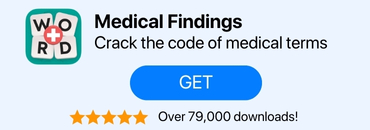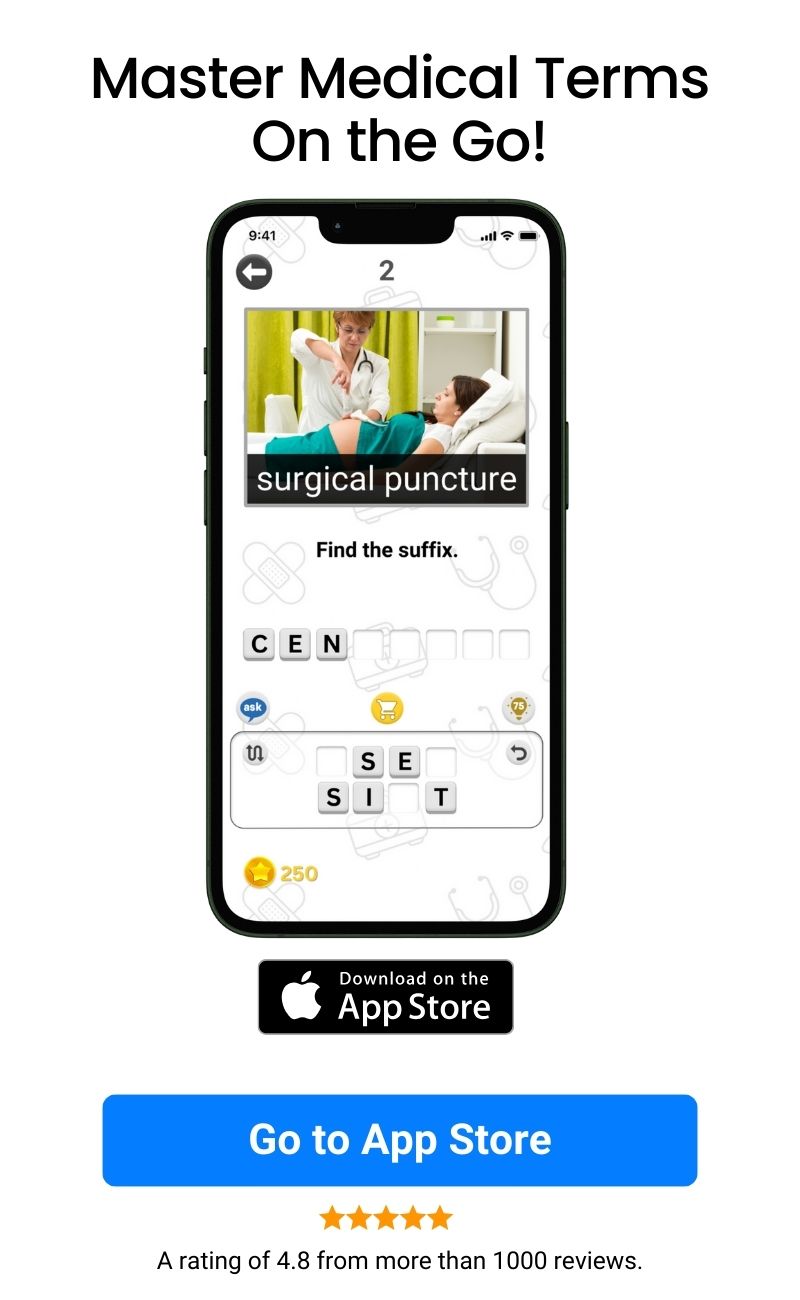Quick Review for the Quiz
| Word Root | Combining Form | Body Part or Condition |
|---|---|---|
| herni | herni/o | hernia |
| ile | ile/o | ileum |
| jejun | jejun/o | jejunum |
| labi, cheil | labi/o, cheil/o | lip |
| lingu, gloss | lingu/o, gloss/o | tongue |
| or, stoma, stomat | or/o, stoma, stomat/o | mouth |
| palat | palat/o | palate |
| pancreat | pancreat/o | pancreas |
| peritone | peritone/o | peritoneum |
| pylor | pylor/o |
pylorus or pyloric sphincter
|
-
Question of
Find the combining form of the image pointed to.

-
herni/o
-
pylor/o
-
cec/o
-
enter/o
Correct Wrong
herni/o is the combining form that refers to "hernia". Hernias happen when an organ or body part protrudes through the wall of muscle or tissue that normally surrounds it. Generally, hernias are caused by pressure and weakness in muscles or fascia; the pressure pushes an organ or tissue through.
-
-
Question of
Find the combining form of the image pointed to.

-
ile/o
-
enter/o
-
appendic/o
-
cholecyst/o
Correct Wrong
ile/o is the combining form that refers to "ileum". The ileum is last portion of the small intestine. The ileum helps to further digest food coming from the stomach and other parts of the small intestine.
-
-
Question of
Find the combining form of the image pointed to.

-
jejun/o
-
sigmoid/o
-
an/o
-
ile/o
Correct Wrong
jejun/o is the combining form that refers to "jejunum". The jejunum is in the middle of the small intestine, between the duodenum (first part) and ileum (last part). Jejunum's primary function is to absorb sugars, fatty acids, and amino acids.
-
-
Question of
Find the combining form of the image pointed to.

-
labi/o or cheil/o
-
gnath/o
-
or/o, stoma or stomat/o
-
cholangi/o
Correct Wrong
labi/o or cheil/o is the combining form that refers to "lip". Lips are the visible part of the mouth. As well as opening the mouth, they allow the mouth to articulate sounds and speech.
-
-
Question of
Find the combining form of the image highlighted.

-
lingu/o or gloss/o
-
cholecyst/o
-
choledoch/o
-
duoden/o
Correct Wrong
lingu/o or gloss/o is the combining form that refers to "tongue". The tongue is a muscular organ located in the mouth. It is responsible for shifting food around while you eat and for helping you pronounce clearly when you speak.
-
-
Question of
Find the combining form.

-
or/o, stoma or stomat/o
-
an/o
-
choledoch/o
-
jejun/o
Correct Wrong
or/o, stoma or stomat/o is the combining form that refers to "mouth". Located inside the skull, the mouth is an oval-shaped cavity. It is used for chewing and speaking.
-
-
Question of
Find the combining form of the image pointed to.

-
palat/o
-
an/o
-
uvul/o
-
col/o
Correct Wrong
palat/o is the combining form that refers to "palate". Palate is the roof of the mouth between the mouth and nose. In this way, it serves as a barrier between the digestive and respiratory tracts by separating the mouth from the nose. Using this function, a person can breathe and eat simultaneously.
-
-
Question of
Find the combining form of the image highlighted.

-
pancreat/o
-
jejun/o
-
cholecyst/o
-
cec/o
Correct Wrong
pancreat/o is the combining form that refers to "pancreas". Pancreas is a flat pear-shaped gland surrounded by the stomach. The pancreas is responsible for two main functions: assisting the body in digesting food and regulating blood sugar levels.
-
-
Question of
Find the combining form of the image described.

-
peritone/o
-
chol/e
-
cholecyst/o
-
cec/o
Correct Wrong
peritone/o is the combining form that refers to "peritoneum". Peritoneum is a membrane lining the abdominopelvic cavity and surrounds and protects the abdominal organs.
-
-
Question of
Find the combining form of the image pointed to.

-
pylor/o
-
hepat/o
-
bucc/o
-
peritone/o
Correct Wrong
pylor/o is the combining form that refers to "pylorus" or "pyloric sphincter". Pylorus or pyloric part, connects stomach to duodenum (first part of small intestine). During digestion, the pylorus opens and closes, thus enabling partially digested food to pass from the stomach to the small intestine.
-




